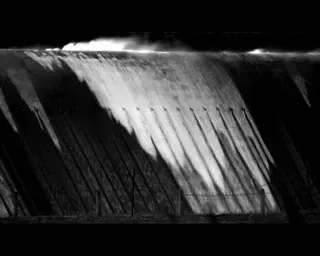Media Povera
Written by

Media Povera: Brett Ian Balogh, Radio Cegeste, Ryan Cockburn, Edie Eves, Helga Fassonaki, Alexander MacKinnon. Curated by Sally Ann McIntyre
Providing its own eclectic take on the “media formerly known as new”, Media Povera groups together artists based in New Zealand, Greece, Australia and the USA.
An exhibition that groups together artistic strategies emerging from hybrid investigations in the contemporary, audio, media and transmission arts, together these works foreground the materiality of the media object in the age of digital immateriality, while remaining mindful of its agency within systems of production and distribution - as Sarah Cook and Beryl Graham have identified in their book "Rethinking Curating: Art after New Media" media are best understood not as materials but as “behaviors” – participatory, performative or generative.
Media Povera presents a series of artistic investigations into synaesthesic sound-image translation, transmission as a museological space, the afterlife of obsolete formats, and technology as a craft medium.
These artists run record labels, reconfigure sound objects as silent paintings, leave answering machine messages from radiophonic ghosts, and make anti-spectacular technologies which are simple, vulnerable, and transparent. Whether their focus is on technology from a “do-it-yourself” perspective, ways of making that are critical of current consumer technologies, or references to technological and art histories that look at the media object as something that’s not a series of points on a timeline, but a cloud of possibilities always available for interrogation, with their hybridizing of newer and older technologies, together these works cast a critical eye over the subject of the sonic object’s disappearance and its relation to systems of cultural exchange.
Nigel Bunn: three works
Nigel Bunn’s investigations into the participatory potential of technology are often characterized by a destabilization of the methodological and rigorous position of the scientist with the play and poetics of artistic curiosity. For this exhibition the artist provides insight into the breadth of his hybrid media projects, with tools designed and built to create moving and still images, and graphic sound-image translation, presented together with the works that emerge from them – showing the product as/in process, and the tradition of the oily rag reconfigured as an empire of possibilities.
KF Pieters: magnet
Pieters’ long experiment in marrying improvised music with moving image begins in the live forums of experimental music culture, and moves towards the installation space's potential to engage with durational viewing, and the sublime, near-painterly spaces of long-take cinema.
In this collaboration with Wellington’s Seht / Stephen Clover, the image is twinned with sound to produce immersively liminal space for the viewer / listener to find a sensorial flow within.
Pieters considers magnet to be "a fine example of the direct time-image theorized by the philosopher gilles deleuze, one dimension of which is the placing of at least two autonomous terms beside each other. para beside paradeigma paradigme meaning literally “what shows itself beside”)) here a sound image and a visual image are shown beside each other. the cinematic action/reaction relationship is absent between the two. this does not mean that a relationship does not exist but its qualities are particular and are not predetermined. this incommensurability forms a field of unactualized possibilities. a space such as this is an offering, it could call one up to activate ones own thinking And each time..... attention needs to be paid. one need not pay attention. there is nothing presupposed here, least of all, of course your attention."